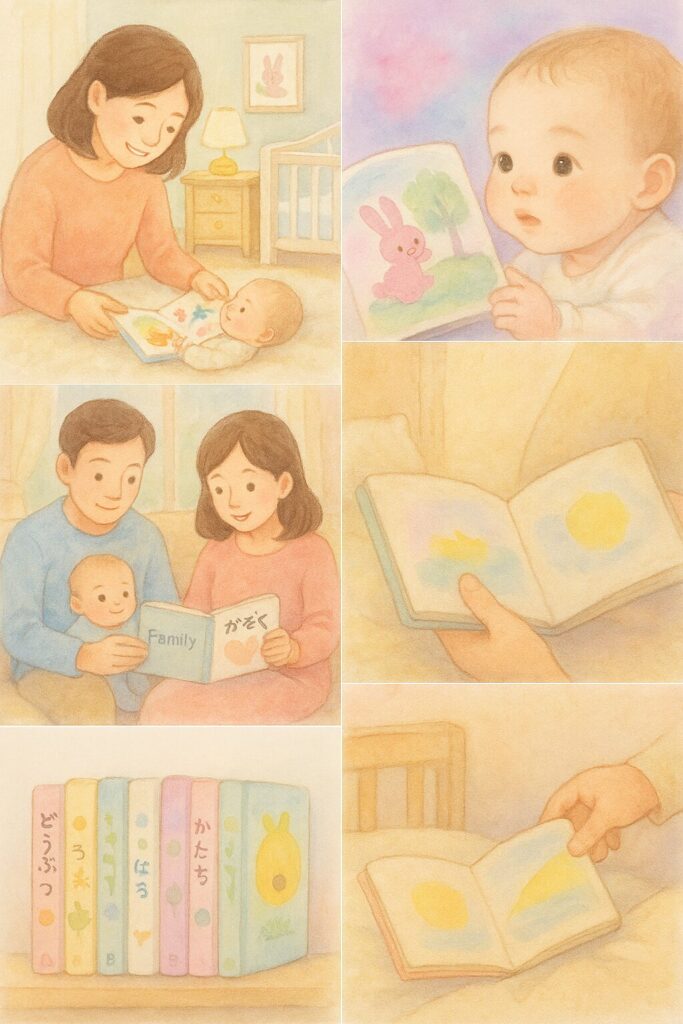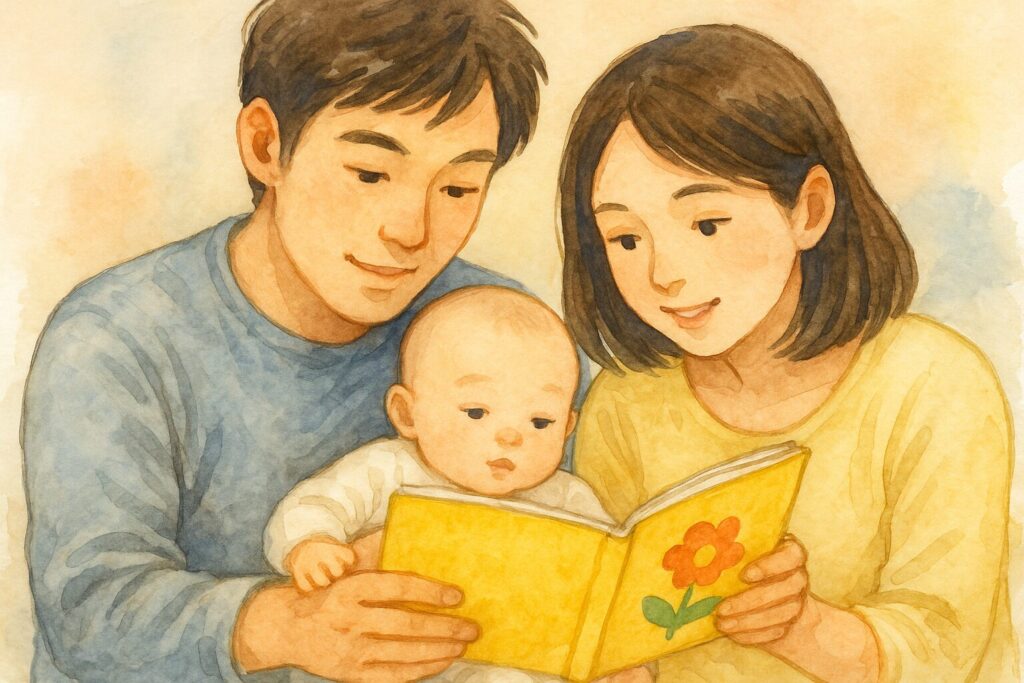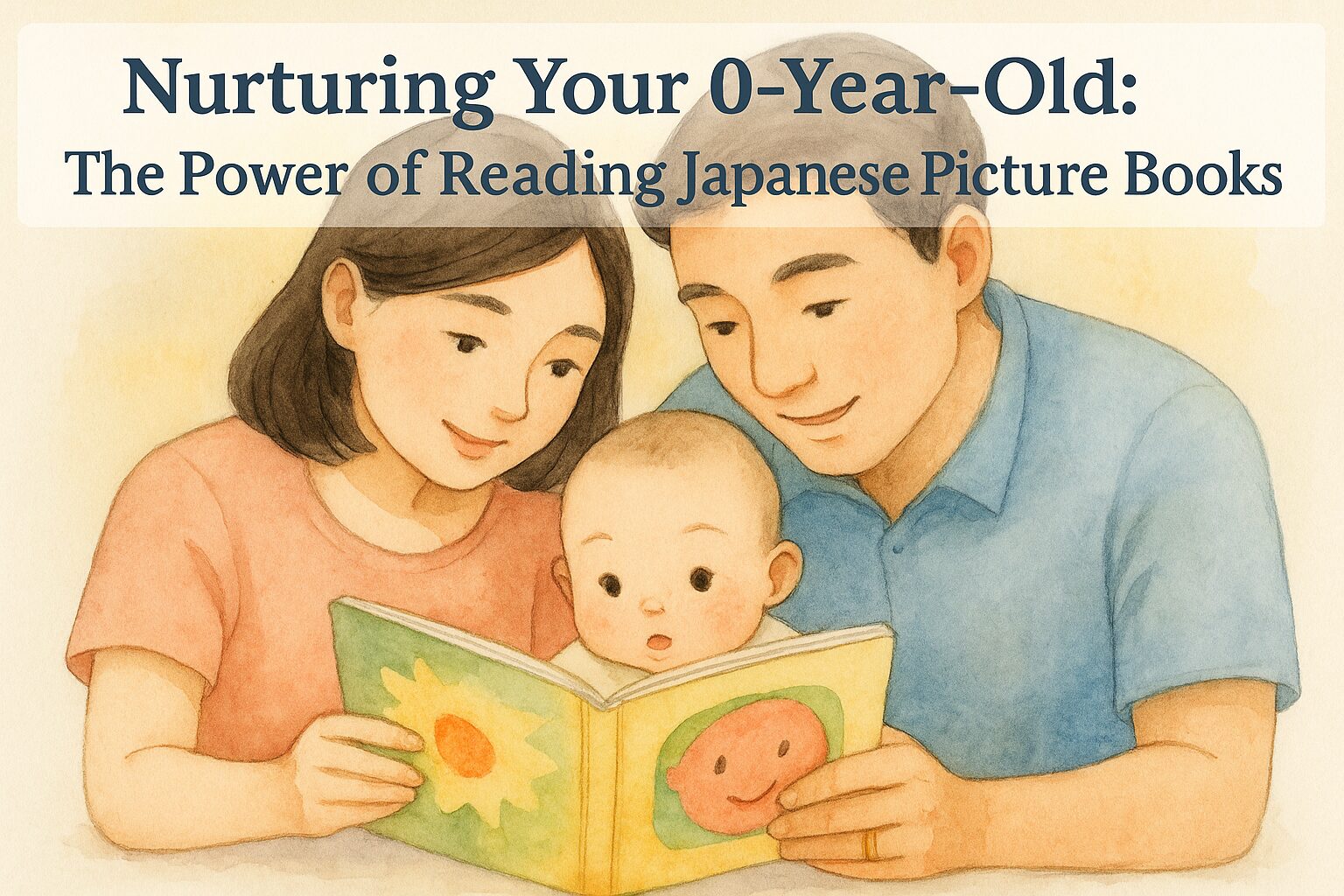Introduction
Welcoming a newborn into your life is a moment filled with excitement and love. As parents, you want to give your 0-year-old the very best foundation for healthy growth, emotional security, and early learning. One simple yet profound practice is reading aloud––even before they utter their first words. In this post, we’ll explore the importance of reading to 0-year-olds, why Japanese picture books are uniquely beneficial, and practical tips for making this bonding experience both joyful and meaningful.

Why Reading to 0-Year-Olds Matters
The Science of Early Brain Development
By the time your baby is born, their brain already contains nearly 100 billion neurons. The first year of life sees rapid neural growth:
- Synapse Formation: Reading and auditory stimulation help form crucial connections in language and emotional centers.
- Cognitive Stimulation: Even if your baby doesn’t understand words yet, the rhythms and patterns of speech prime their brain for future learning.
- Emotional Regulation: Hearing your calm, loving voice can reduce stress hormones like cortisol, promoting a secure attachment.
Emotional Bonding from Day One
Reading creates a shared moment:
- Eye Contact & Touch: Holding your baby close while you read fosters a deep sense of safety.
- Voice Familiarity: Your baby learns to recognize and be comforted by your unique tone and cadence.
- Routine & Predictability: A regular reading ritual can soothe fussy moments and establish trust.
Why Japanese Picture Books Shine for Newborns
Vivid, Simple Illustrations
Japanese picture books, or ehon, are celebrated for:
- High-Contrast Images: Bold shapes and gentle color washes help newborns focus and develop sight.
- Minimal Text: Few words on each page prevent overstimulation and allow babies to attend to images and sounds.
- Textured Details: Subtle brush strokes and patterns invite visual exploration.
Culturally Rich Themes
These books often embody:
- Nature’s Beauty: Soft depictions of flowers, animals, and seasonal changes nurture calmness.
- Gentle Storytelling: Universal lessons on love, family, and growth presented in poetic simplicity.
- Mindful Moments: Pages encouraging deep breathing, listening to nature, and slowing down—practices beneficial for both baby and parent.
Creating a Warm Reading Environment
Setting the Scene
- Lighting: Use soft, indirect light—too bright can overwhelm sensitive young eyes.
- Comfort: Ensure your baby is well-fed, burped, and comfortable before starting.
- Positioning: Hold your baby close, chest-to-chest, so they feel your heartbeat.
Using Your Voice Effectively
- Pace & Pause: Speak slowly, leaving space for your baby to listen and process.
- Tone Variation: Soften for lullabies, brighten for playful animals—these shifts hold attention.
- Gentle Repetition: Babies love familiar phrases; repeating key refrains helps build memory pathways.

Interactive Tips for 0-Year-Olds
- Point & Pause: Point to the main shape or image, give your baby a moment to look, then name it.
- Touch & Feel: If the book has textured elements, let your baby feel them—stimulating tactile senses.
- Sing Alongs: Turn simple lines into a lullaby; melodies enhance auditory discrimination.
Involving the Entire Family
Bilingual Bonding: Encourage grandparents or siblings to join in reading—whether in English, Japanese, or both.
- Shared Ritual: A nightly family reading time strengthens bonds and makes everyone feel included.
- Language Exposure: Early multi-language exposure can support future multilingual abilities.
Safety & Practical Considerations
- Book Material: Choose sturdy board books with rounded corners to prevent tears and choking hazards.
- Cleanliness: Wipe down books regularly—infants explore with their mouths!
- Rotation: Swap books every week to keep stimulation fresh but maintain familiarity.
Frequently Asked Questions (FAQ)
Q1: At what age should I start reading?
A: From birth, even simple coos and visuals aid neurological growth.
Q2: How long should each session last?
A: Keep initial sessions to 5–10 minutes, gradually extending as your baby’s attention grows.
Q3: Can touch-and-feel books be too stimulating?
A: When chosen carefully, textured books provide safe sensory play; always supervise.
Conclusion
Reading picture books to your 0-year-old is more than a cute ritual—it’s a powerful investment in their cognitive, emotional, and sensory development. With the unique artistry and gentle narratives of Japanese picture books, you can create moments of deep connection, soothing calm, and joyful discovery.
Start today by selecting a soft-board Japanese book, finding a snug cuddle spot, and sharing the magic of reading with your newborn. Your voice, your touch, and those serene illustrations will resonate throughout their life.




comment Please enter a comment.